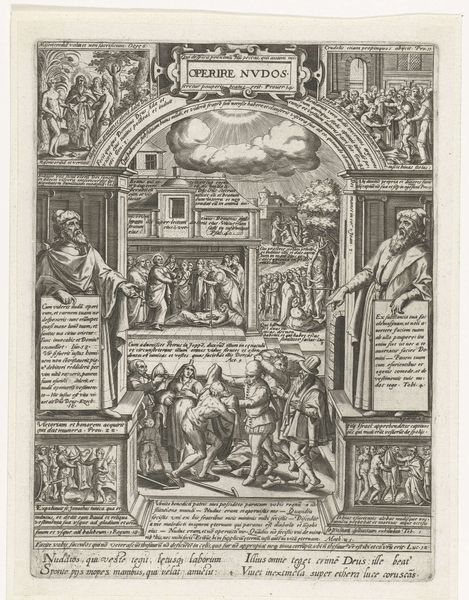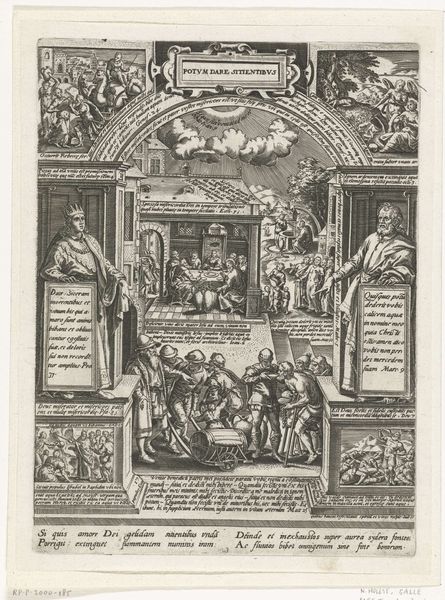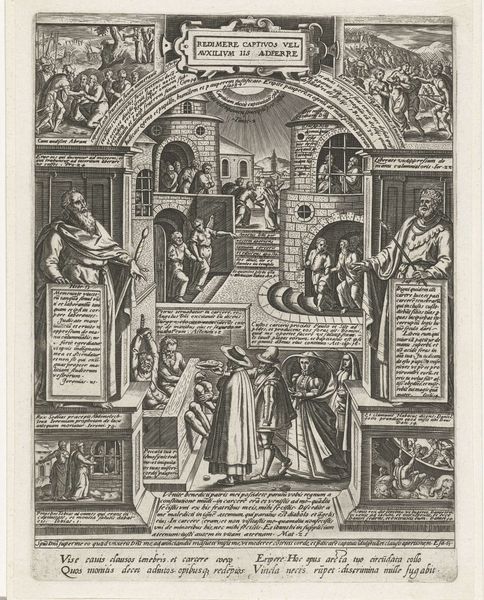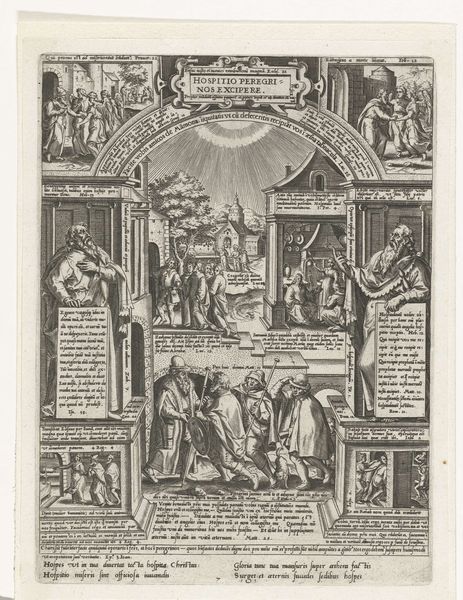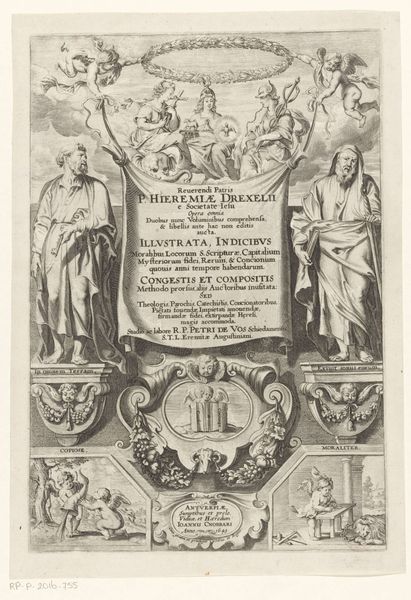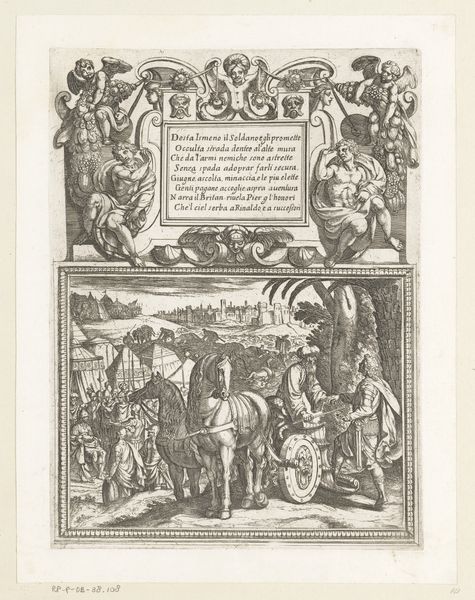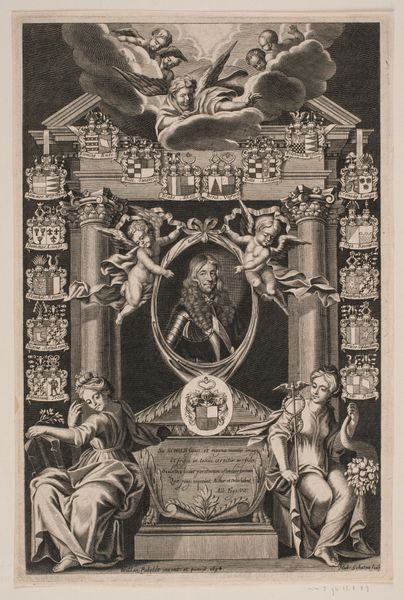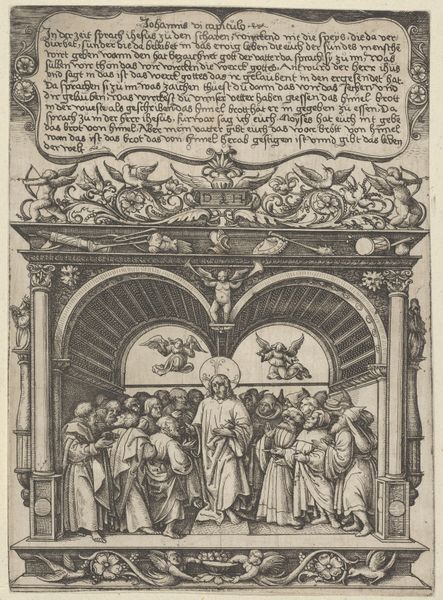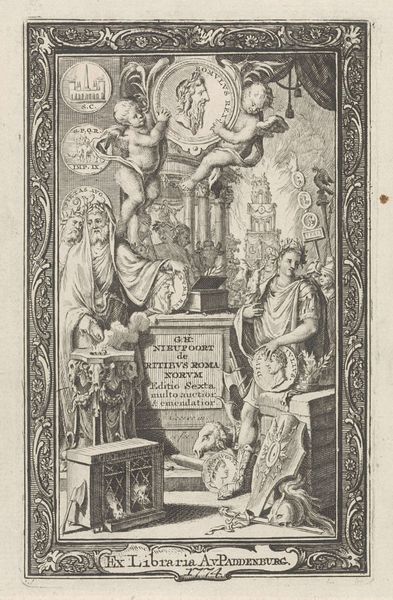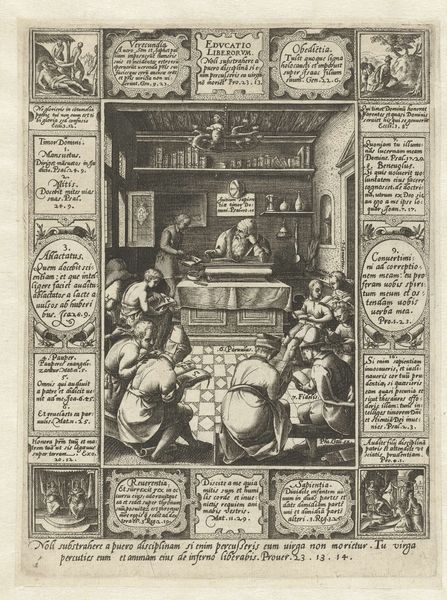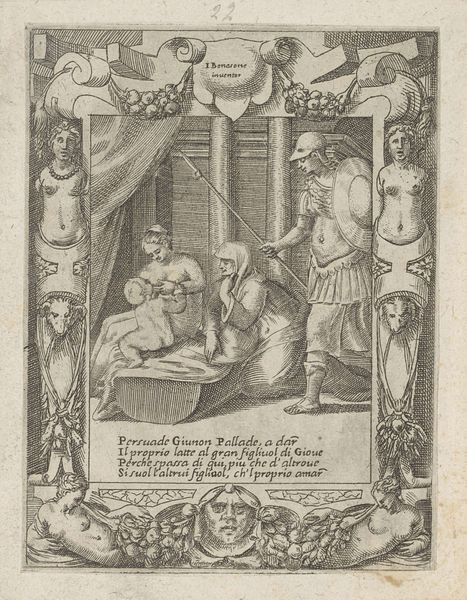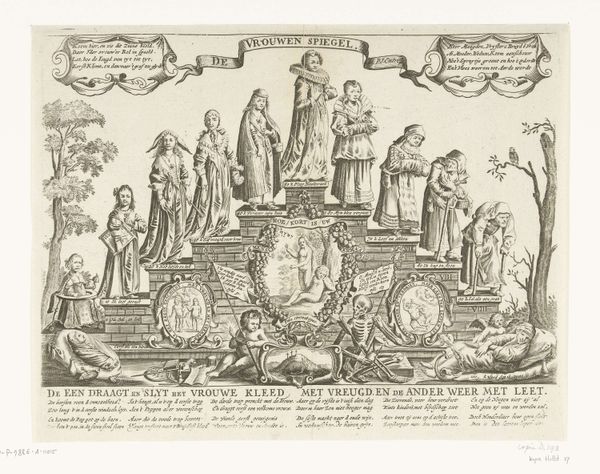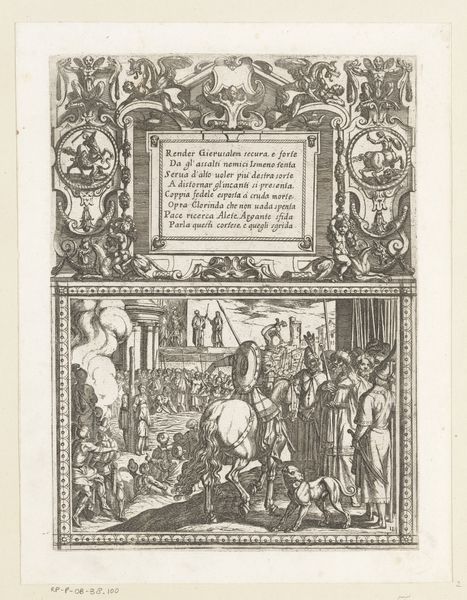
Dimensions: height 256 mm, width 192 mm
Copyright: Rijks Museum: Open Domain
Curator: This intricate engraving is entitled "Het bezoeken van de zieken," or "Visiting the Sick," created in 1577 by Philips Galle. The medium appears to be a print, an early iteration of what we'd now think of as photo-lithography. Editor: It strikes me immediately as intensely organized. The way the architectural framing devices containing figures give this piece a very didactic, yet also narrative feel. You could call this busy...but purposeful. Curator: Galle worked as a printmaker and publisher, meaning he understood the economics of art production and dissemination in the 16th century. The clear delineation and duplication achievable with the process were obviously vital for reaching a wide audience with these moral narratives. Editor: The architecture framing, alongside the various biblical scenes depicted, places the act of visiting the sick within a specific historical and cultural context. Churches were significant spaces for performing care. It highlights not just personal charity, but a civic duty fostered by institutions. Curator: Precisely. Consider the contrast between the wealthy figure distributing goods and the stark scenes of suffering in the central panel. There’s a clear commentary on social responsibility embedded in the material exchange being shown. Editor: The engraving’s existence itself plays a part in shaping public perception. Prints like these helped circulate specific understandings of virtue, piety, and social welfare. By depicting these charitable acts, it aimed to inspire a social and political agenda, but more particularly from a specific church. Curator: And Galle wasn’t merely an artisan executing a commission. His skilled rendering and deliberate compositions gave shape to religious ideology. This reflects the intersection of labor, artistry, and social forces at play within printmaking workshops of the period. Editor: Seeing it now I recognize how its material accessibility facilitated social control and influence, solidifying certain roles, practices, and relationships to charity that endures still. Curator: Indeed. By examining Galle's print, we uncover not only the social concerns of the 16th century, but also the active role art played in shaping ethical ideals within broader networks of production and consumption. Editor: A tangible reminder of the powerful social work embedded in even the smallest works, in that time.
Comments
No comments
Be the first to comment and join the conversation on the ultimate creative platform.
